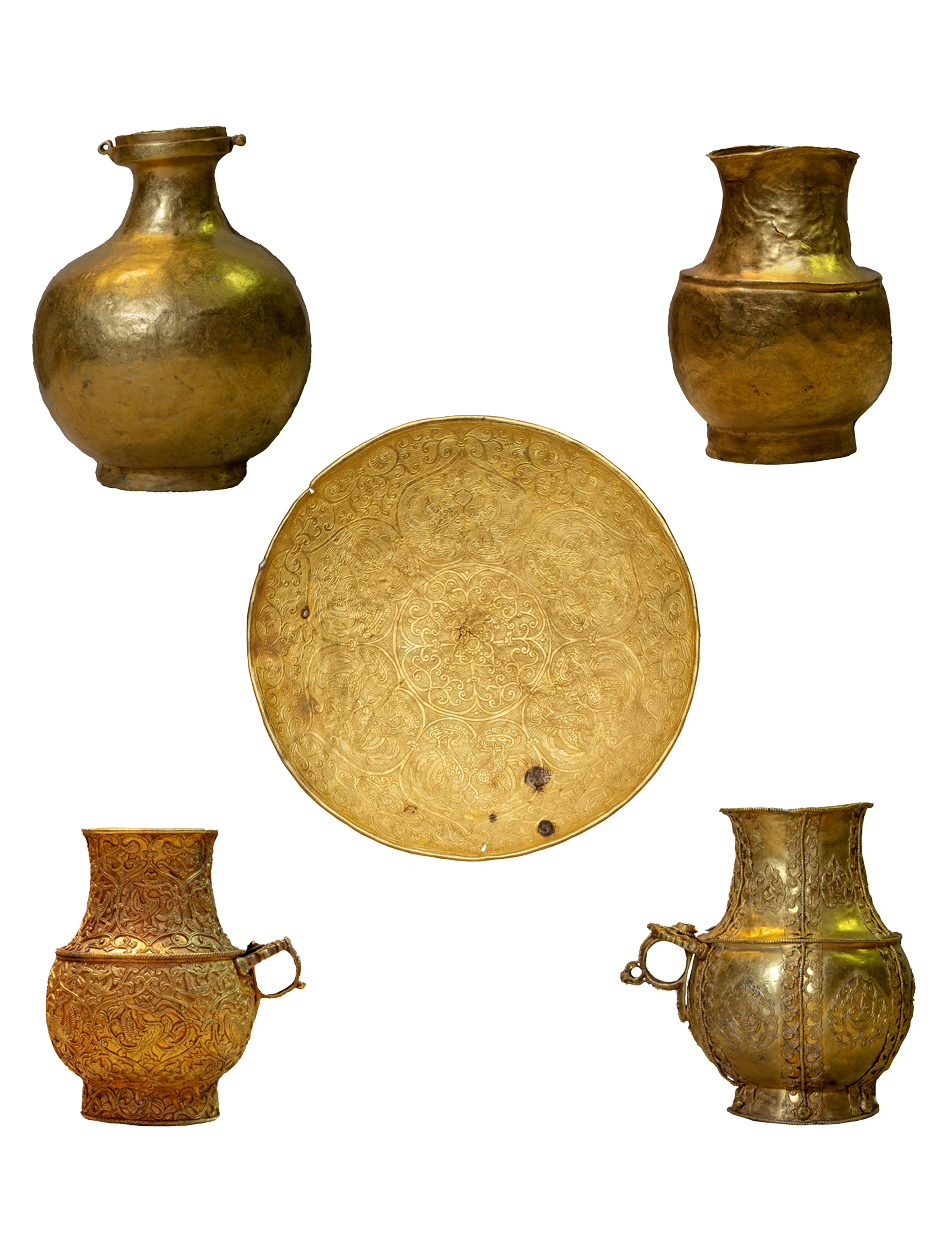Vessels and a plate

Chaatases are burial complexes of the population of Khakas-Minusinsk Hollow of Turkic period. These are groups of stone barrows fenced by high plates. Two vessels – a bottle-like pitcher with a lost lid and a vessel in shape of a goblet – have smooth surface. Other two vessels that have a shape of a mug with loop like handles, and the plate are decorated richly with hammered and laid on ornaments. A specialty of ornamentation of these vessels is a combination of traits peculiar to Iranian and Chinese decorative art. To Chinese elements in the ornament belong hovering birds, “clouds”, rows of stylized petals, some variants of palmettes. At the same time, the image of birds reflect Iranian mythological traditions – it was considered, that the shadow of a blessed Huma bird brings happiness. The surface of the plate is decorated with hammered ornament. Around the central vignette six lockets are placed. The space inside the vignette and the whole outside surface of the plate is filled with a complicated floral ornament. Inside lockets birds are depicted, standing on some kind of hovering “clouds” opposite one another. Such images and ornament were widely spread in China in the period of the Tang dynasty (VII-X centuries) on different objects – vessels, silk fabrics, mirrors. Each couple of birds in their beak holds braided of floral spears lozenge, that in China is considered a symbol of victory.
Exhibit’s purpose of use – precious donative vessels. On the bottom of the goblet-like vessel a seal in the form of a heraldic eagle is cut – a symbol of property of an owner, that brought the gift, and an inscription: “purest gold”. On bottoms of smooth vessels Orkhon Turkic runic inscriptions are applied. On the base of the bottle is written: “a geared to the duke tribute we gave”. All vessels of the hiding are meant, they were brought as a tribute to the dead.
Uniqueness. Vessels found in hidings probably were crafted in area where Chinese and Sasanian influences tightly interweaved. Such areas were eastern part of the Middle Asia and north-west of China (Xinjiang), that were obliged to Yenissey-Turco tribes of the period of prosperity of the Kyrgyz Khaganate in the IX century.
